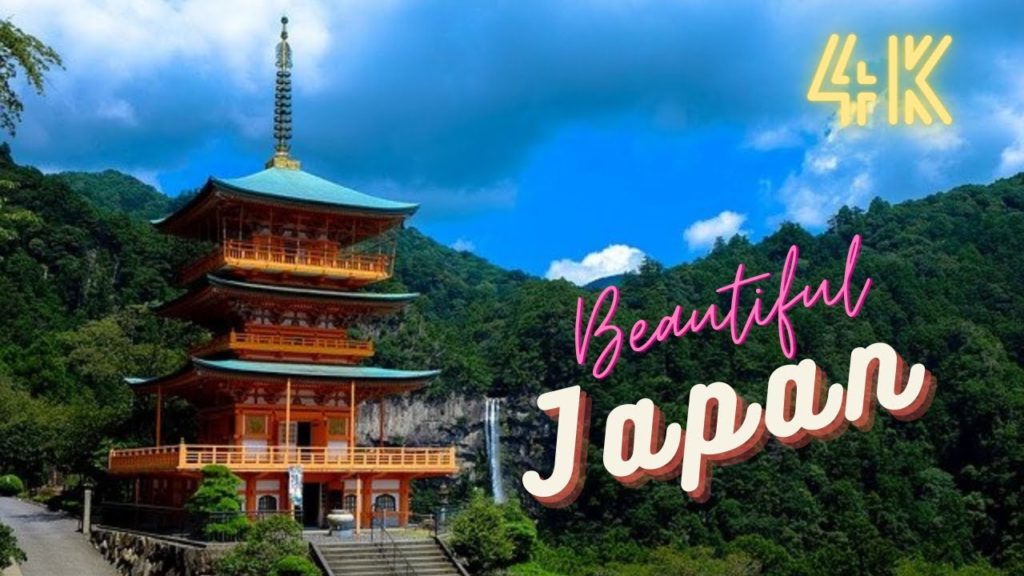Japan Japanese: Nippon or Nihon, is an island country in East Asia. It is located in the northwest Pacific Ocean, with the Sea of Japan to the west and the Sea of Okhotsk to the north, as well as the East China Sea and Taiwan to the south. Hokkaido, Honshu (the “mainland”), Shikoku, Kyushu, and Okinawa are the five main islands of Japan, which span an archipelago of 6852 islands encompassing 377,975 square kilometres (145,937 square miles). Tokyo is the country’s capital and largest city, with Yokohama, Osaka, Nagoya, Sapporo, Fukuoka, Kobe, and Kyoto rounding out the top ten.
Japan is the world’s eleventh most populous country and one of the world’s most densely populated and urbanised. The country’s geography is mountainous for about three-quarters of the way, squeezing the country’s 125.44 million people on narrow coastal plains. There are 47 administrative prefectures and eight traditional regions in Japan. With almost 37.4 million residents, the #Greater_Tokyo Area is the world’s most populated metropolitan area.
Japan has been inhabited since the Upper Paleolithic period (30,000 BC), but the first documented mention of the archipelago dates from the 2nd century AD in a Chinese chronicle (the Book of Han). The kingdoms of Japan were unified under an emperor and the imperial court in Heian-ky between the 4th and 9th centuries. Political control was held by a series of military dictators (shgun) and feudal lords (daimy) beginning in the 12th century, and enforced by a class of warrior nobility (samurai). The kingdom was reunified in 1603 under the #Tokugawa_shogunate, which pursued an isolationist foreign policy after a century of civil conflict. A US navy compelled Japan to open commerce with the West in 1854, resulting in the shogunate’s demise and the restoration of imperial rule in 1868. During the #Meiji_period, Japan’s Empire adopted a Western-style constitution and embarked on an industrialization and modernization programme. Japan invaded China in 1937 and entered World War II as an Axis power in 1941, amid a rise in militarism and overseas expansion. Japan surrendered in 1945 after suffering defeat in the Pacific War and two atomic bombings, and was occupied by the Allies for seven years, during which time it enacted a new constitution. Japan has maintained a unitary parliamentary constitutional monarchy with a bicameral legislature, the National Diet, since the 1947 constitution.
Japan is a major power that has been a member of various international organisations since 1956, including the United Nations, the OECD, the G20, and the Group of Seven. Despite having given up the ability to declare war, the country maintains one of the world’s most powerful military, the Self-Defense Forces. After WWII, Japan had unprecedented economic development, rising to become the world’s second-largest economy by 1972, but has been stagnant since 1995, dubbed the “Lost Decades.” The country’s economy is the third-largest in nominal GDP and the fourth-largest in terms of purchasing power parity (PPP) as of 2021. Japan, which is ranked “extremely high” on the Human Development Index, has one of the highest life expectancies in the world, despite population decline. Japan has made enormous contributions to science and technology as a global leader in the #automobile, #robotics, and #electronics industries. Japan’s culture, including its #art, #cuisine, #music, and popular culture, which includes strong #comic, #animation, and #video_game industries, is well-known around the world.
#japan_travel #japan_tourism #japan_desh_ke_bare_mein #full_hd
#japan_cities_and_beautiful_places #japan_travel #japan_tourism
#travel_to_japan
#beautiful_japan
#scenic_japan
#hd
#4k
#amazing_country_japan
#14daysinJapan
#Japan
#Japantravelguide
#things_to_do_in_japan #8k #japan_tourist_places


AloJapan.com